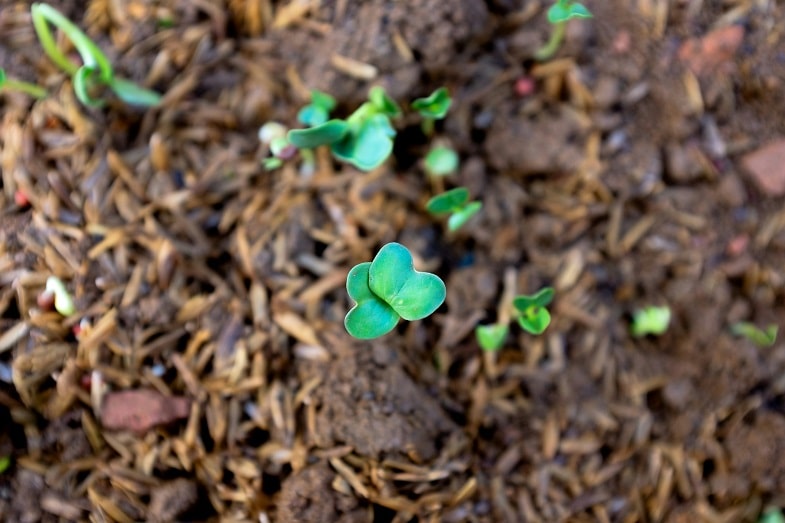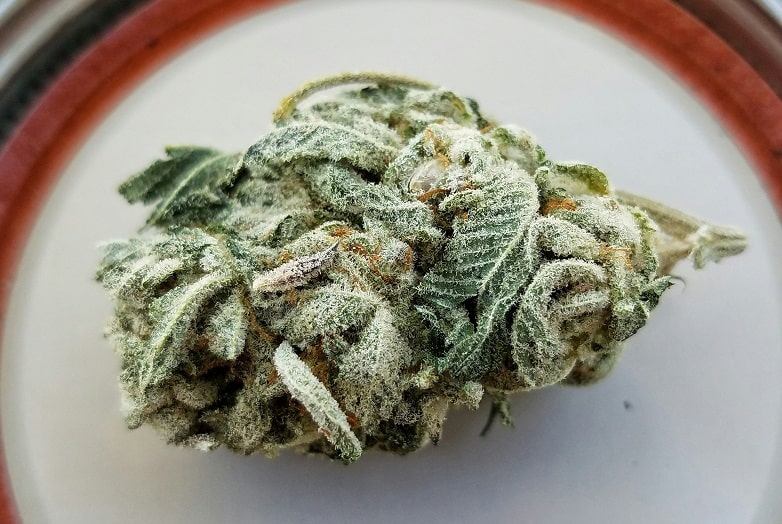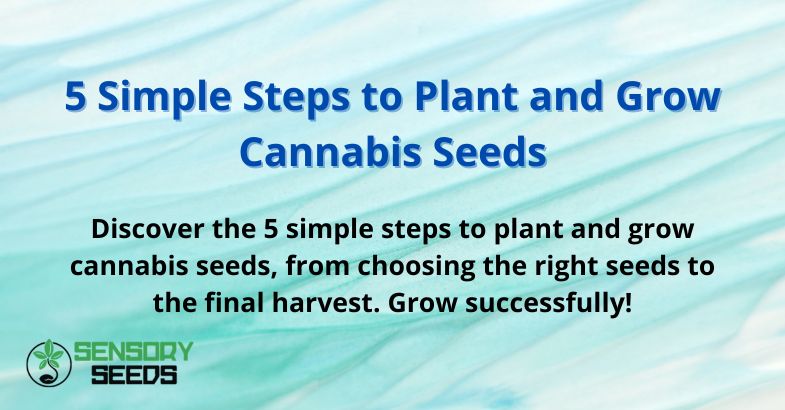Published on: 30/05/2025
Discover the 5 simple steps to plant and grow cannabis seeds, from choosing the right seeds to the final harvest. Grow successfully!
Cannabis cultivation is a fascinating process that, when done correctly, can lead to strong and productive plants with excellent results. However, to achieve effective results, it’s essential to follow some key guidelines. Whether you’re an experienced grower or a beginner, understanding the fundamental steps to plant and grow cannabis seeds is the foundation for obtaining a healthy plant full of quality flowers.
In this article, we will guide you through five simple steps that will help you successfully grow your cannabis seeds. You’ll learn how to choose the right seeds, how to manage light, temperature, and humidity for your plants, and finally, how to care for and harvest your flowers. Additionally, we will explore the various types of cannabis seeds, such as autoflowering seeds, feminized seeds, and fast flowering seeds, which you can choose based on your needs.
Cannabis Seeds – The Foundation for Successful Cultivation
The process of cannabis cultivation starts with choosing the seeds, which form the foundation of your entire plant. Cannabis seeds have the power to determine the quality of your plant, the speed of its growth, and its ability to produce high-quality buds. When it comes to selecting cannabis seeds, it’s crucial to consider various factors, including the variety and specific characteristics of the plant you wish to grow.
There are different types of cannabis seeds that can suit the various needs of the grower. Among the most common are autoflowering cannabis seeds, which are ideal for those seeking a fast cultivation process, and feminized cannabis seeds, which ensure that you will grow only female plants, ready to produce buds rich in cannabinoids. Additionally, there are fast flowering seeds, which combine the characteristics of both autoflowering and feminized seeds, allowing for quick harvests without sacrificing quality.
In this guide, we will walk you through the five essential steps for growing marijuana seeds. These steps will help you understand how to handle your seeds, how to plant them, and how to manage their lifecycle to ensure healthy growth and an abundant harvest.
Read also: Complete Guide to Cannabis Seed Germination
STEP 0: Knowledge About Cannabis Cultivation
Before you start planting weed seeds, it’s essential to have a solid understanding of the factors that affect the growth of the plants. This will allow you to create an optimal environment and avoid mistakes that could jeopardize your cultivation. There are several factors you should consider:
- Humidity: Humidity is one of the most critical factors throughout the cannabis cultivation process, from germination to flower maturation. The right amount of humidity promotes good germination and growth. If the humidity is too high, it can cause mold and rot, while if it’s too low, the plant may suffer from dehydration. Generally, maintaining humidity between 40% and 60% is ideal for cannabis, with slightly higher peaks during germination and flowering.
- Temperature: Temperature plays a crucial role in the well-being of cannabis plants. In general, the ideal temperature for germination and the vegetative phase ranges from 20°C to 25°C, while during the flowering phase, it can be slightly lower, between 18°C and 24°C. Temperatures that are too low can slow down or halt growth, while those that are too high can stress the plants and damage flower production.
- Light: Cannabis is a plant that depends on light cycles to regulate its growth and flowering. During the vegetative phase, the plants need around 18 hours of light per day, while during the flowering phase, the light cycle should be reduced to 12 hours of light and 12 hours of darkness. Autoflowering plants, however, are not dependent on light cycles and can grow and flower even with an 18-hour light cycle.
- Soil Type: The soil is equally fundamental for healthy cultivation. A good substrate should be well-aerated and able to retain moisture without becoming too compact. Peat, perlite, and compost are great for ensuring good drainage. It’s important to avoid heavy or clayey soils, as they can hinder root growth.
These are just some of the most crucial factors every cannabis grower should understand. Once you know how to control these aspects, you’ll be ready to move on to the next steps.
STEP 1: Choosing the Right Cannabis Seeds
Choosing the right seeds is one of the most important aspects when starting cannabis cultivation. Selecting the right seeds can make the difference between a bountiful harvest and a plant that struggles to grow. In this phase, it is crucial to understand your needs, the type of climate you’ll be growing in, and the characteristics you desire in the plant.
There are various types of cannabis seeds, including:
- Autoflowering Cannabis Seeds: These seeds are perfect for those seeking a fast and low-maintenance harvest. Autoflowering plants do not rely on the light cycle to begin flowering but instead start automatically after a certain period. This type of seed is ideal for those with limited space or who want to grow multiple times per year.
- Feminized Cannabis Seeds: Feminized seeds are popular among many growers as they guarantee female plants, which are the only ones capable of producing flowers rich in cannabinoids. Feminized seeds are especially useful for those seeking abundant and high-quality yields. However, managing the light cycle is essential for these plants, especially when grown in indoor environments.
- Fast Flowering Seeds: These seeds are a combination of autoflowering and feminized varieties. They offer quick harvests without compromising the quality of the final product. They are ideal for those looking for fast cultivation but still want plants that develop high-quality flowers.
When choosing your cannabis seeds, it’s important to rely on trusted retailers like Sensory Seeds, which offers a wide range of high-quality seeds. Sensory Seeds is known for the quality of its seeds and customer service, making it an excellent choice for those looking to start on the right foot.


STEP 2: Planting and Germinating Cannabis Seeds
Once you’ve chosen the right seeds, it’s time to plant them and begin the germination process. Germination is the first crucial step in growing your plants. There are several methods to germinate seeds, but one of the most common and easiest to execute is the paper towel method.
For this method, place the seed between two sheets of damp paper towel and keep them in a warm and dark location. After 24-48 hours, you should see the seed’s root begin to sprout. When the root is about 1 cm long, it’s time to plant the seed into your chosen soil or substrate.
Make sure the substrate is moist but not overly wet to prevent the seed from rotting. Also, remember that marijuana seeds need a warm and protected environment to germinate properly. Once the seeds have germinated, they can be transferred into the soil or a plant container.
STEP 3: The Vegetative Stage
The vegetative stage is crucial for developing a healthy and productive cannabis plant. During this stage, the plant grows rapidly, developing roots, leaves, and stems that prepare it for abundant flowering. In this period, the plants need about 18 hours of light per day to stimulate fast growth. If grown outdoors, it’s important to consider the season and the amount of natural light available.
Additionally, managing temperature and humidity is key. The ideal temperature is between 22-26°C during the day, and it should not drop below 18°C at night. Humidity should be kept between 60% and 70% to prevent stress and mold issues. Adequate ventilation is essential to maintain a healthy environment and prevent stagnant moisture buildup.
During this stage, it’s also the right time to intervene on the plant’s structure. Pruning by removing weak or excess branches encourages more compact growth and stimulates the formation of new lateral buds. Some growers use techniques like Low Stress Training (LST), which evenly distributes growth, resulting in a bush-like shape that will produce more flowers.
Fertilizers specifically designed for the vegetative stage, rich in nitrogen, are essential to stimulate the development of strong leaves and photosynthesis. However, it’s important not to overdo it with nitrogen to avoid excessive and untidy growth.
For autoflowering seeds, the vegetative stage will be shorter, as these plants quickly transition to flowering. In contrast, feminized plants may stay in the vegetative stage for several weeks, depending on the conditions and variety. Proper care during this phase prepares the plant for the next flowering stage, ensuring a healthy and abundant harvest.
STEP 4: Flowering
The flowering stage is the crucial moment when the cannabis plant begins to develop its flowers, the most valuable part of the plant. During this phase, various stages can be distinguished: pre-flowering, actual flowering, and maturation, when the flowers are ready to be harvested.
In this stage, the plant needs approximately 12 hours of light and 12 hours of darkness to stimulate flower production. It is essential to maintain uninterrupted darkness, as any disruption could compromise the flowering process and encourage the formation of male flowers in feminized plants.
Nutrition must be adjusted, favoring fertilizers rich in phosphorus and potassium, which are essential for flower growth. It’s important to avoid excess nitrogen, as it could interfere with flower production. At the same time, the plant should be monitored to prevent diseases and pests, while maintaining humidity around 50-60%.
Finally, the grower should observe the development of trichomes on the flowers to determine the ideal harvest time. Autoflowering plants tend to complete this stage faster than feminized plants. The flowering phase requires great attention, but it is also when the plant reaches its full potential.


STEP 5: Maturation, Harvesting, and Drying
Maturation marks the end of the cannabis growth cycle. The flowers are ready for harvesting when the trichomes, the small resin glands on the flowers, become cloudy and amber in color, indicating that the cannabinoids have reached their peak potential. It’s important to observe the trichomes with a magnifying lens to determine the ideal time for harvesting and ensure the highest quality.
Once harvested, the flowers must be dried in a cool, dark, and well-ventilated place. The ideal temperature is around 18-21°C with humidity below 60%. It is crucial to avoid direct heat sources to preserve aroma and potency. The drying process should take between 7 to 14 days, depending on environmental conditions, until the flowers are crispy on the outside but still soft on the inside.
After drying, curing the flowers is essential. This process, which lasts from one week to several weeks, involves storing the flowers in airtight containers such as glass jars. It is important to open the containers daily to prevent moisture buildup and ensure the flowers breathe properly.
Finally, storing the dried and cured flowers in airtight containers helps maintain freshness, aroma, and potency over time, allowing you to enjoy high-quality cannabis.
Read also: What Is Wax? How Is It Made?
Conclusion
Growing cannabis from seeds is a process that requires not only patience but also a solid understanding and careful attention at every stage of the plant’s life cycle. Each step, from selecting the right seeds to the final harvest, is crucial to ensuring a successful cultivation. By following the five steps we’ve outlined, you can be confident you are starting off on the right foot to achieve high-quality cannabis flowers.
It is essential to remember that selecting the right seeds is the first critical step to growing strong and productive plants. Afterward, creating an ideal environment for growth, which includes proper management of light, temperature, and humidity, is equally important. Monitoring the plants consistently and addressing any issues that arise during the vegetative, flowering, or maturation phases is just as crucial.
Each phase of cultivation requires special attention, and only with the right effort and adequate knowledge can you hope to achieve superior-quality cannabis. With patience and dedication, you can optimize the cultivation of your plants and achieve the best possible outcome. When properly managed, cannabis cultivation can be a fulfilling and rewarding experience, offering not only high-quality products but also a great sense of personal satisfaction.









